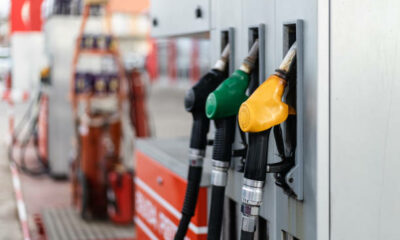Best of Johannesburg
How to Access Your Bank Without a Branch: A Modern Guide for South Africa 2025

How banking went branchless (and why you might prefer it)
It wasn’t long ago that banks meant queues, paper forms, and trips to the branch. These days, everything is shifting. More South Africans are doing their banking from sofas, taxis, and taverns; anywhere really. Thanks to mobile apps, online banking, USSD codes, and some entirely digital banks, there’s less need for physical branches.
The central bank’s roadmap, Vision 2025: Digital Payments & National Payment System Strategy, is pushing hard for banking that’s inclusive, secure, affordable, and digital. The aim is to make payment systems smarter, access easier, and costs lower. Big gaps like digital illiteracy, unreliable infrastructure, and trust in online tools are being addressed.
What it takes to start banking without stepping into a branch
Here’s how to get going:
-
Pick a bank (or go digital-only)
If you choose a traditional bank, ensure it supports full digital enrollment. There are also purely digital banks now, which have no branches at all. -
Fill in your application and verify your identity
You’ll typically need a valid South African ID (or passport if you’re not a citizen), proof of address that is fairly recent, contact details, and sometimes income or tax info. You do this online or via an app. -
Register for online and mobile access
Once approved, you’ll set up login credentials. Sometimes that includes extra security features like biometrics, two-factor authentication, or app-only PINs. -
Know the digital tools available
• Mobile banking apps: iOS or Android apps that let you do transfers, view balances, top up airtime, etc.
• Internet banking via web browser on a laptop or PC: great for detailed tasks, statements, and seeing full transaction history.
• USSD / cellphone banking: works even on basic phones. Dial a code, and you can check your balance, pay bills, buy data, and send money.
• ATMs remain useful for cash withdrawals, some deposits, etc.
• Telephone / call centre support: when the app glitches or you have questions, banks still do this, sometimes via automated systems or human agents.
Features you can count on, what works
Once you’re set up, here are the things you should be able to do:
-
View balances, recent transactions, download statements
-
Make payments: bills, utilities, send money to others
-
Buy airtime or mobile data directly
-
Manage your cards: change limits, cancel if lost, sometimes order a new one via the app
-
Access help: live chat or in-app support, automated help, perhaps phone support
Staying safe in a branch-less world
Digital convenience is great, but risks are real. Here’s how to protect yourself:
-
Use strong, unique passwords; enable 2-factor authentication wherever possible
-
Be alert for phishing: don’t follow suspicious links in emails or SMS pretending to be your bank
-
Keep your devices and apps updated to patch security holes
-
Avoid using unsecured public WiFi for banking
-
Check your statements regularly so you spot anything odd fast
What’s new in 2025: trends, tools and regulation
Some fresh developments that affect how branchless banking works now:
-
The Digital Payments Roadmap by the South African Reserve Bank is putting in place about 17 action items addressing cost, interoperability, inclusion, and innovation. The goal is that more people, even in rural areas, can access safe, affordable payments and banking tools.
-
Digital-only banks have grown in presence. Examples of banks offering branchless onboarding and full functionality via apps. These are helpful, especially if you don’t live near a major city.
-
Open banking (shared APIs between fintechs and banks) is becoming more significant. That means more choices, more apps doing things like account aggregation, or smoother ways to move money between platforms.
-
Regulatory changes emphasise fairness, transparency, and accountability. If you feel you’re being charged unfairly or misinformed, there are protections under updated codes and banking laws.
Where branchless banking still struggles
Not everything is perfect yet. There are hurdles to wider adoption:
-
In remote areas internet access, phone coverage or reliable power can be inconsistent
-
Some people lack digital skills, trust or familiarity with doing financial stuff online
-
Fraud and security concerns are ongoing; banks are working on better tools but risk remains
Is branchless banking for you?
If you have a smartphone or even a simple phone, you’re probably in good shape. Bank from your couch, avoid traffic and branches, and get things done on your time. If you live outside internet hotspots or aren’t confident with digital tools yet, you may prefer hybrid: bank digitally but get occasional in-person help.
Either way South Africa in 2025 is making it clear: branches are no longer the only way in.
Also read: Are Tap-to-Pay Cards Really Safe? What Every South African Should Know in 2025
Follow Joburg ETC on Facebook, Twitter, TikT
For more News in Johannesburg, visit joburgetc.com
Featured Image: Adobe Stock



























